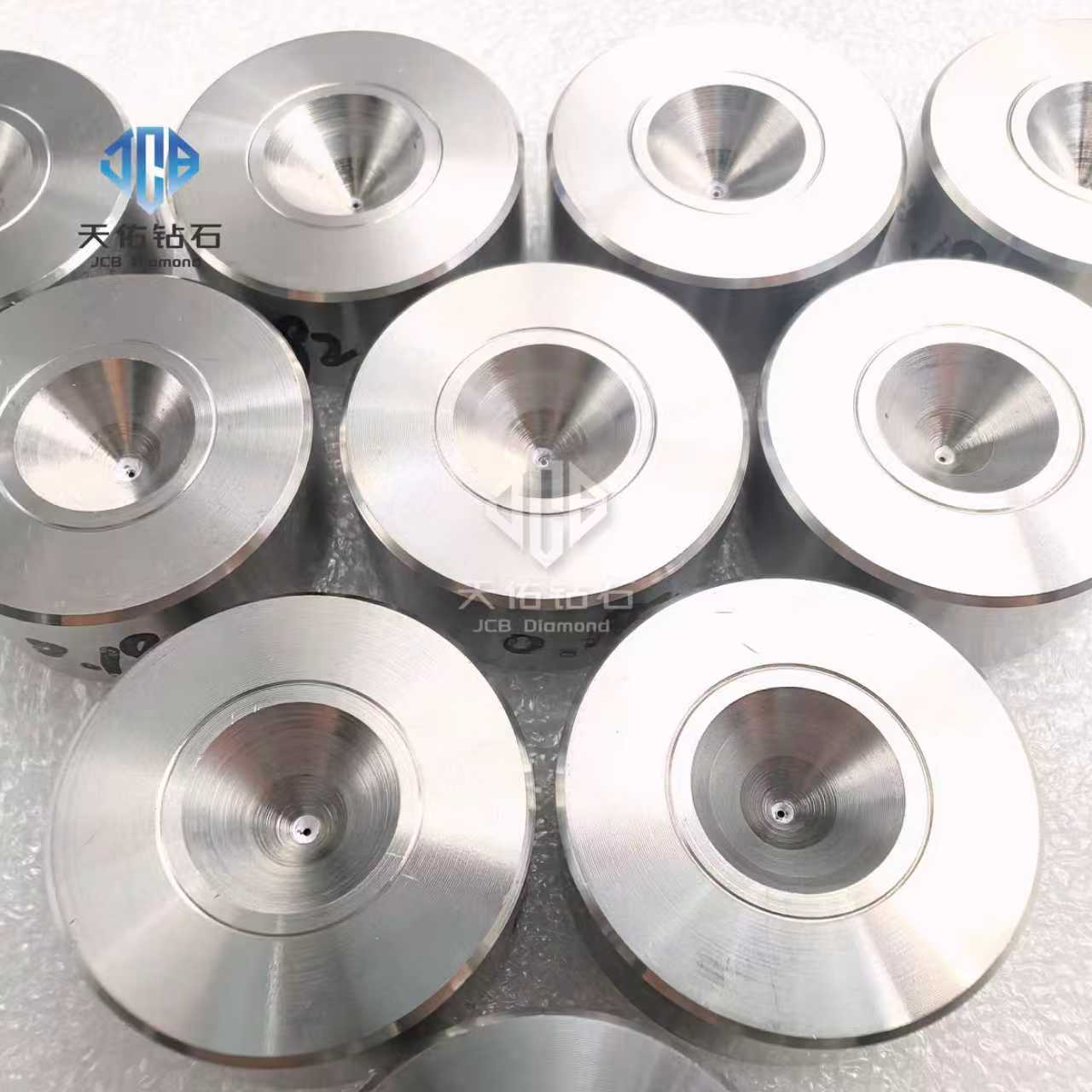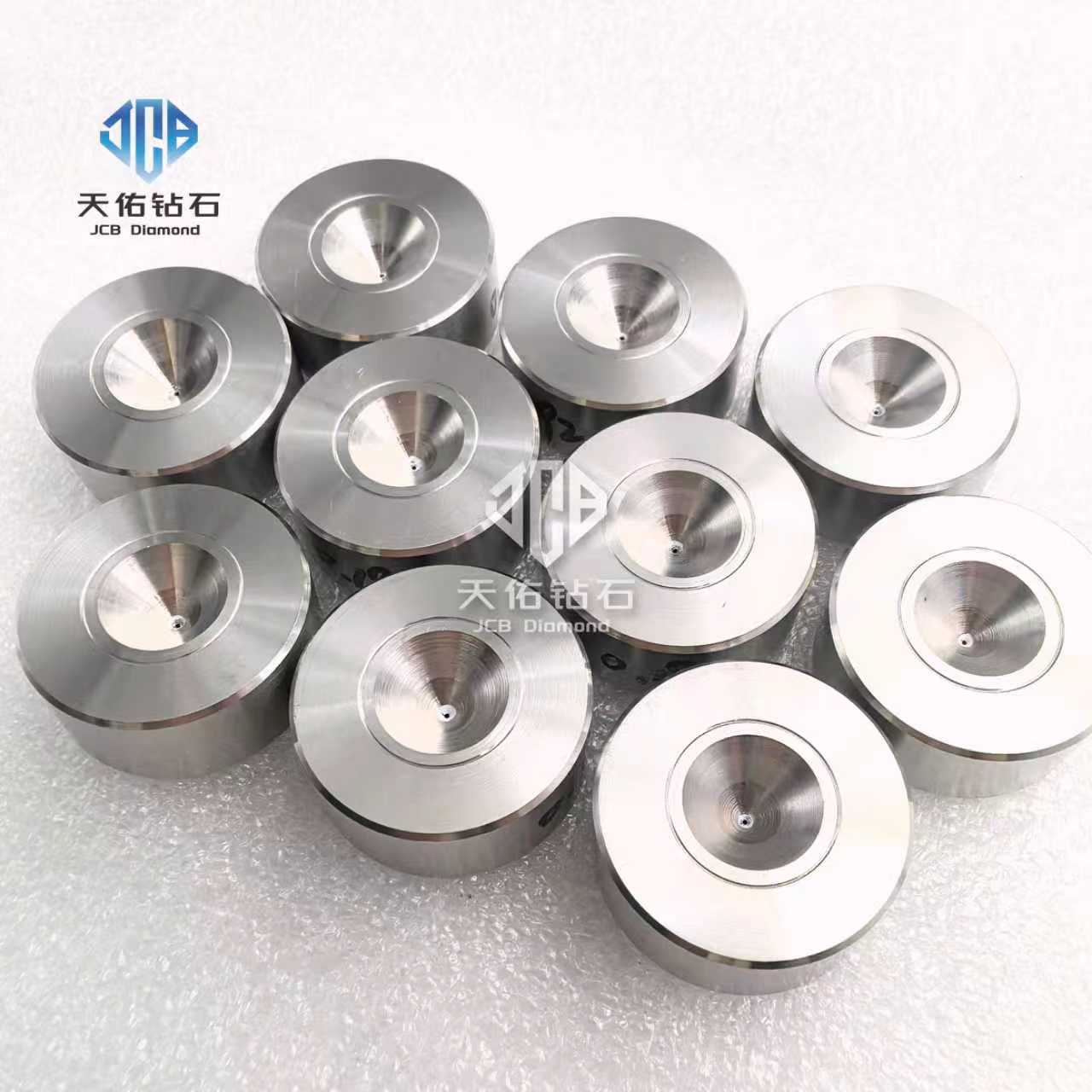Diamond wire drawing dies are revolutionizing the wire drawing industry, offering unmatched precision, durability, and performance. These dies, crafted from synthetic or natural diamonds, play a crucial role in manufacturing fine wires with high accuracy and minimal wear. This article provides a concise overview of the production process, key benefits, and diverse applications of diamond wire drawing dies, highlighting their significance in modern manufacturing.

1. Production Process of Diamond Wire Drawing Dies
The production of diamond wire drawing dies follows a precise and multi-step process to ensure high-quality output.
Material Selection: The dies are made from synthetic or natural diamonds, known for their exceptional hardness and wear resistance. Synthetic diamonds are commonly used due to their consistency and cost-effectiveness.
Design and Manufacturing: Using advanced CAD software, precise designs are created, ensuring the correct geometry and material flow. The diamond material is then cut and shaped using methods like Electrical Discharge Machining (EDM) or laser cutting, followed by heat treatment to enhance durability.
Surface Finishing and Testing: The dies undergo polishing or coating to reduce friction, with extensive quality control testing to ensure they meet required performance standards.

Exceptional Hardness: Diamond’s extreme hardness allows for high precision and significantly longer die life compared to conventional materials.
Wear Resistance: Diamond’s hardness results in lower wear rates, making the dies ideal for high-volume production of fine wires.
Thermal Conductivity: Diamond's superior thermal properties help dissipate heat, preventing overheating and maintaining the integrity of both the wire and the die.

Diamond wire drawing dies are used in numerous industries, particularly where precision and high-quality wire are essential:
Electronics: Used for producing fine wires and leads for semiconductors and circuit boards, ensuring high conductivity and reliability.
Telecommunications: Essential in the production of wires and cables for data transmission, including optical fibers and coaxial cables.
Medical Devices: Crucial for making fine wires for medical implants, pacemaker leads, and surgical tools, meeting stringent safety and performance standards.
Automotive: Used in manufacturing wiring for automotive electrical systems, ensuring durability and reliability under harsh conditions.
Jewelry: Diamond dies are employed to create fine wire from precious metals like gold and platinum, enabling high-quality jewelry production.
Aerospace: Diamond dies are used to produce high-strength wires and components for critical aerospace applications.

The wire drawing process relies on specialized equipment to maximize the performance of diamond dies:
Wire Drawing Machines: These machines provide the tensile force required to draw wire through the die.
Lubrication and Cooling Systems: Lubrication minimizes friction, while cooling systems prevent overheating during the drawing process.
Tensile Testing Tools: These are used to measure the strength of the drawn wire, ensuring it meets specific industry standards.
Diamond wire drawing dies offer unparalleled benefits in precision manufacturing. Their durability, high performance, and ability to produce defect-free wires make them indispensable in industries ranging from electronics to aerospace. As technology advances, diamond wire drawing dies will continue to play a pivotal role in shaping the future of high-precision wire production.